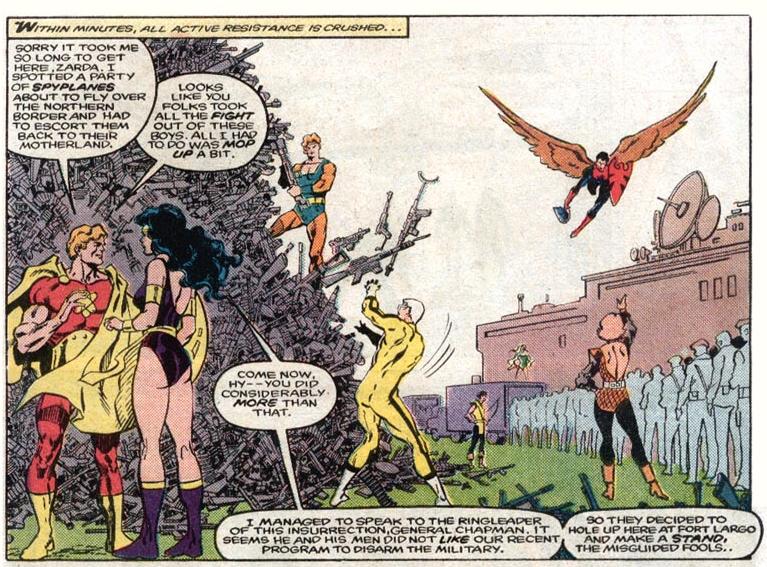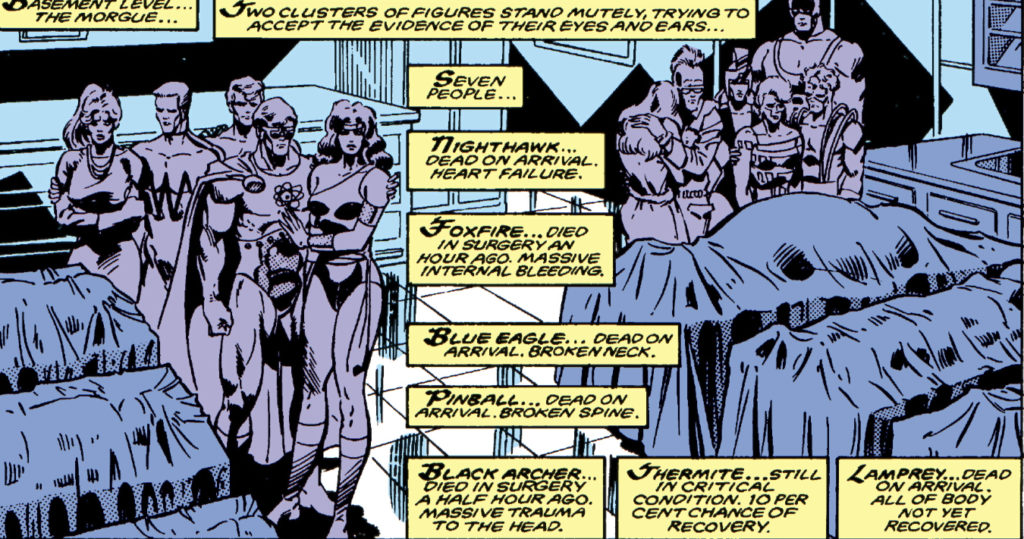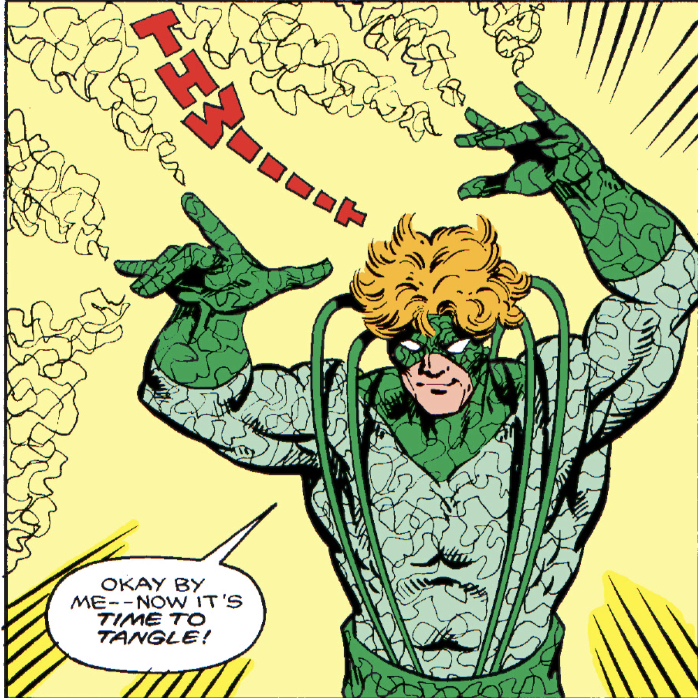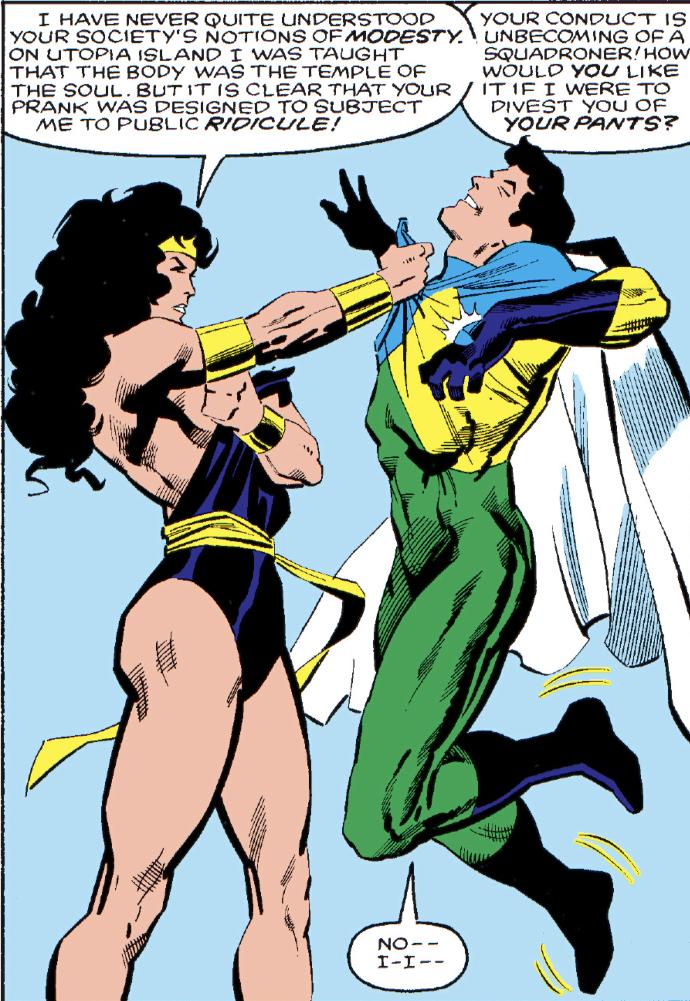
The Squadron Supreme miniseries is one of the top 10 Mark Gruenwald comics of all time and also one of the top 10 Marvel Miniseries of the 1980s.
Squadron Supreme was a book ahead of its time. It tells the story of the Marvel version of DC’s Justice League, who exist in an alternate reality, trying to take on problems like world peace and starvation and…

…disarmament.

It’s the precursor to darker, more sophisticated books like The Authority and Watchmen, but you might not notice the direct line from this book to those because it’s also a decidedly 1980s comic. The team disarms the planet and enforces its own version of utopia (issue #1 is titled, The Utopia Principle) that, of course, goes wrong.

And the team is at war with the very humans it is claiming to help.
Halfway through, the book loosely ties into the 616 Marvel Universe—probably in an attempt to boost sales—with Captain America #314.

And then the universes cross, pitting Squadron Sinister against Squadron Supreme.



The Hyperions fight and play a new version of “got your nose.”





And of course we end with Batman (Nighthawk) taking down Hyperion, whose zeal to create a perfect society has made him betray his own ideals…



…Until he falls victim to a doublecross!

This is a long and complex story, and way ahead of its time.
Along the way, Gruenwald does a good job at giving screen time to even the most underused members, like Amphibian.

And Nuke, seen here talking with Tom Thumb, who dies in issue #9 of cancer.

Gruenwald also created several new characters who didn’t make it past the final issue…

Not all the new characters are JLA-derrived. Haywire, for example, literally creates wires.

Art is by Bob Hall (art #1-5, 8), Paul Ryan (#6, 9-12), John Buscema (#7), and Paul Neary (Cap #314).
Also note the DC references, like the cover to Cap #314…


And after Doctor Spectrum pops a button on Power Princess’ costume, she confronts him–a clear reference to Wonder Woman’s history of being used as a sex object/bondage model.

